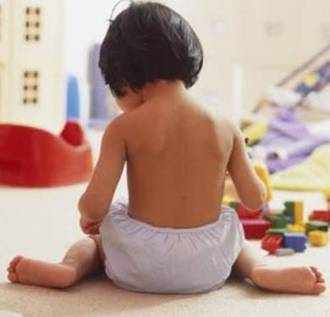Shop
01930
https://www.under5s.co.nz/shop/Hot+Topics+Articles/Child+Development/The+effects+of+W-sitting.html
The effects of W-sitting
|
We take a look at the effects of W-Sitting, why it’s not ideal and the postural and developmental issues it may cause young kids.
|
You might also be interested in ...
How do I get help if I think my child has special needs?
As parents we all dream about the possibilities for our children long before they ever realise them. However what happens if your child does not develop like the other children of his/her age. What should you do if you have a worry about your child’s learning or development?
Effects of dummies & thumb sucking on kids teeth
Does your little one suck their thumb or use a dummy? It can be a way to pacify them when they’re young, but did you know that it can cause long term damage to their teeth as they grow nearer to school age?
join usJoin us on social media for all our latest news. |
sign upSign up and receive our latest newsletters. |
|







What is W-sitting?
W-sitting is when kids sit on the floor on their bottom, with their knees bent, feet tucked under and their legs angled behind them to form a W-shape on the floor.
Because this position is so common amongst kids, parents are often not aware of the postural, developmental and growth issues that come from excessive use.
For example, W-sitting can cause hip distortion, knee and foot distortion, poor development of their core muscles and lack of cross-body coordination.
The effects of W-sitting
1. Hip distortion
When your kids' legs are externally rotated, it puts an enormous pressure on the internal aspect of their hip joints.
Muscles that stabilise the hip joints become short and contracted in this position and it can impact their walking development and how their hips and pelvis move later in life.
Their hips also have a greater chance of dislocating when they are sitting in the W-position.
2. Knee & foot distortion
In the W-sitting position your toddler's or preschooler's knees are internally rotated and their ankles are externally rotated.
The force over their knees, coupled with the force in their hips, is likely to cause spasms and contractures through their hamstrings and inner thigh muscles, as well as their Achilles tendon.
3. Poor development of core muscles
A secondary side effect of W-sitting is poor use and development of core muscles.
Because your kids are stabilised by the extreme rotation of their legs, they do not need to use the muscles in their core to stay upright or to balance.
Their hips and pelvis become locked into place and their abs and pelvic muscles just relax as they have no need to work.
4. Lack of cross-body co-ordination
This is related to the poor development of core muscles.
With a lack of muscle stability and tone in your little one's abdomen, there is also a lack of cross-body movement.
Cross-body movement is the key to crawling, and later walking.
When they are in the W-position, you will notice your toddler's or pre-schooler's right arm will stay on the right side of their body and will not reach across to the left, and vice versa.
Bilateral movements are critical for early brain development and are needed for reaching more advanced developmental milestones later on, such as for reading and writing.
5. Preventing W-sitting
There are no magic cures, other than preventing it from becoming a habit and discouraging your kids from sitting in the W-position.
Anticipate when it will happen and correct it as soon as you can.
Contact a paediatric chiropractor for further advice.
More kids articles to enjoy:
- Toddler regression
- The problem with bribes & rewards
- Kids who interrupt
Image source: babyparenting.about.com